Books
AS AUTHOR
American Music Legends
50 Seasons: A History of the Nashville Symphony
AS GHOSTWRITER
My Father’s Business
Growing Rich: Success in Business, Success in Life
AS EDITOR
Love to Stay
24 Hours That Changed the World
AS CONTRIBUTOR
The Ultimate Bird Lover
The Tennessee Encyclopedia of History and Culture
as author

The Southern Wildlife Watcher: Notes of a Naturalist
By Rob Simbeck
2020 The University of South Carolina Press
The Southern Wildlife Watcher
Notes of a Naturalist
Rob Simbeck
Foreword by Jim Casada
The Southern Wildlife Watcher is a colorful look at thirty-six common and not-so-common animals found in the southeastern United States—from the hummingbird to the bald eagle and from the bullfrog to the bobcat. Rob Simbeck, one of the Southeast’s most widely read naturalists, combines a poet’s voice with a journalist’s rigor in offering readers an intimate introduction to the creatures around us.
Through delightful storytelling each vignette offers accessible information supported by quotes from noted naturalists and biologists. Simbeck covers habitat, diet, mating and reproduction, environmental challenges, and even folklore in outlining the lives of insects and other invertebrates, birds, mammals, reptiles, amphibians, crustaceans, and fish. The Southern Wildlife Watcher is a refresher course and handbook for veteran nature lovers, an introduction for young readers, and fireplace or bedtime reading for those wanting to reflect on nature’s bounty.
A foreword is provided by Jim Casada, the author or editor of more than forty books and some five thousand magazine articles. He serves as editor at large for Sporting Classics magazine.
Rob Simbeck has written for the Washington Post, Guideposts, Field & Stream, Birder’s World, Wildbird, and wildlife/conservation magazines in twenty states. He is the author, ghostwriter, or editor of more than twenty books and is former president and chairman of the Southeastern Outdoor Press Association.
“Engaging and filled with surprising facts, Rob Simbeck’s compact nature anthology conveys awareness of the natural world.”—Foreword Reviews
“The Southern Wildlife Watcher is a feast of information, appreciation, and wonderful writing that will bring your everyday world to life.”—Michael Sims, author of Adam’s Navel
“This witty, insightful, and delightful book is a balm, and it’s one that we need now more than ever.”—Silas House, author of Southernmost
“From blue jays to luna moths, rat snakes to red foxes, starfish to great white sharks, Rob Simbeck teaches us all how to fall in love with the world, one wonderful, intricate living thing at a time.”—Margaret Renkl, author of Late Migrations
“This collection tells us a little about the critters we might encounter while hiking, camping, or simply exploring the mysteries and charms of the South’s vast natural world, or even in your own back yard. . . . a welcome and refreshing reintroduction to some of our fellow planetary travelers.”—Ben Moïse, author of Ramblings of a Lowcountry Game Warden
“The bountiful wildlife of the southland as lovingly seen and described through the eyes of an adopted son of the South.”—Charlie Daniels, country music artist
“Rob writes the kind of book you end up reading in one sitting.”—Sean Dietrich, writer, Sean of the South
“I loooove this book! I was just thinking, I’d give anything to sit down and talk to my grandfather again. This book is like having that opportunity! My Mom’s gonna love it, too.”—Lee Ann Womack, award-winning country music artist
“An excellent guidebook. Any nature writer who can turn house flies and carpenter bees into must-read stories is worth paying attention to.”—Sam Venable, columnist, Knoxville (TN) News Sentinel
“When I heard Rob was writing a book about the “critters” in the outdoors, I was really excited, and I was not disappointed—what a fun read! This book gave me new perspectives and fresh knowledge about creatures I’m very familiar with. Sometimes I forget that other people see them in different places and in different ways. This is a book I’ll share with friends and read again. Catch ya later—I’m headed for the woods.”—Kix Brooks, country music artist, Brooks & Dunn
“To look at nature with wonder and awe is to marvel at its glow. To see nature with knowledge and detail is to understand its truth. To view it through Rob Simbeck’s eyes, the reader gets to embrace everything good about the beauty of nature in every possible way.”—Holly Gleason, editor of Woman Walk the Line: How the Women in Country Music Changed Our Lives
“Some of my earliest memories are of the outdoors and it’s a place where I still find peace today. Rob Simbeck’s stories of everything from the cottontail to the hummingbird bring me back home to Tennessee no matter where I find myself in the world.”—Craig Morgan, country music artist
“Rob Simbeck is the consummate storyteller—informative, engaging, enlightening. The Southern Wildlife Watcher offers a superb blend of outdoor education and entertainment. Simbeck’s stories of familiar and less well-known inhabitants of the natural world will appeal to all who appreciate the outdoors, even those who stay indoors.”—Whit Gibbons, professor emeritus of ecology, University of Georgia
“With the publication of this incredible collection of wildlife stories, Rob Simbeck takes his place in the company of truly great nature writers such as Hal Borland, Donald Culross Peattie, Herbert Ravenel Sass, and John Burroughs. His creature biographies reveal fascinating facts about animals that will stir readers to leave their armchairs and go outdoors to observe firsthand the denizens of woods, fields, oceans, and streams. Simbeck possesses a naturalist’s keen awareness of mother nature’s harsh realities but also has a sympathetic eye for the details that make her charming. The result is one of those rare books destined to be read again and again, each time with fresh enjoyment.”—Keith “Catfish” Sutton, author of Hardcore Catfishing
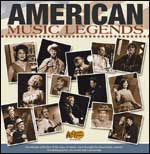
2005 Cumberland Records
By Rob Simbeck
with Les Leverett
The Nashville Musician
January-March 2006
American music legends profiled
By WALT TROTT
Former official 32-year WSM Grand Ole Opry photographer Les Leverett’s vintage portraits and candid snapshots have been compiled and published in “American Music Legends,” an impressive new book from Cumberland Records.
Some 80 artists, many of whom are members of Local 257, are spotlighted, ranging from Eddy Arnold to Patsy Cline to Hank Snow to Kitty Wells.
Leverett’s “ . . . Legends” features text by noted Nashville personalities, among them Bill Anderson, Keith Bilbrey, Carlene Carter, Jack Clement, Charlie Dick, Doug Green, Ramona Jones, Buddy Killen, Kathy Mattea, Gordon Stoker, Sonny Throckmorton, Bob Tubert, Porter Wagoner, Billy Yates and Les himself.
Shades of Garth Brooks – in a special marketing pact, the Cracker Barrel chain restaurant has sponsored publication of the 160-page hardcover book, which will be sold ($17.99) at its numerous outlets. The Cracker Barrel Old Country Store also exclusively sells a popular American Music Legends CD series (currently there are individual albums by such stars as Alison Krauss, Charlie Daniels, Sara Evans, Hank Williams, among others, at $11.99 each).
From 1960 thru 1992, Leverett, now 78, served as the show’s shutterbug, snapping stars on the stages of both the Ryman Auditorium downtown and suburban Opryland’s Grand Ole Opry House, as well as in other situations.
The cover’s 14 sepia-tone shots boast such all-time greats – both Opry members and guests – as Cline, Glen Campbell, Johnny Cash, Ray Charles, Flatt & Scruggs, Roy Orbison, Dolly Parton, the Everly Brothers, plus country king Roy Acuff and comedy queen Minnie Pearl.
Praise for the book’s creative appearance goes in part to McClearen Designs of Nashville, and kudos, too, to journalist Rob Simbeck, who handled both editing and writing chores.
Alabama native Leverett, who earned special Grammy for his telling 1966 portrait for Porter Wagoner’s LP “Confessions of a Broken Man,” and received recognition in 1972 from Billboard trade magazine for his illustration gracing Dolly Parton’s “Bubbling Over” album.
As a reviewer, it is necessary to point out any errors, such as the misspelling of Jimmie Davis’ first name; Roy Acuff’s birthdate, which is 1903, and year of death, 1992. On the other hand, the editor eschewed the p.r. flack listing of Loretta Lynn’s birth and puts it at 1934.
Some non-Opry members written up include Louis Armstrong, who came to town to record an album of country tunes with Cowboy Jack Clement; Gene Autry, the movie’s first singing cowboy; Tony Bennett, headlining an Opryland Hotel convention; George Burns, who recorded Sonny Throckmorton’s “I Wish I Was 18 Again,” published by Tree’s Buddy Killen; Tennessee Ernie Ford, a fan of Minnie Pearl; Bob Hope, a friend to Roy Acuff; Mahalia Jackson, playing a Ryman gig; Brenda Lee, a member of both the Rock and Country Halls of Fame; Patsy Montana, first female Western vocalist to score a pop hit with her 1935 cowboy song “I Want To Be a Cowboy’s Sweetheart”; and King of the Cowboys’ Roy Rogers, the only artist thus far to be inducted into the Country Music Hall of Fame twice (with Sons Of the Pioneers and later solo).
Some covered who left the Opry, but continued strong as artists were Webb Pierce, Kitty Wells, Ray Price, The Jordanaires, Sonny James, Ferlin Husky and The Everly Brothers. (One wonders whether Stonewall Jackson has left, as it’s been a long time since we’ve seen this talented artist in the Opry line-up; and are the Riders in the Sky still an Opry act?) Leverett’s shots have great visual impact, notably in capturing the energetic 19-year-old Marty Stuart on fiddle; Chet Atkins doing what he did best, pickin’; 82-year-old George Burns and his near trademark cigar smokin’ at the Opry; a contented Tom T. Hall; distinguished actor-balladeer Burl Ives, who scored five Top 10 country clicks; cowboy great Tex Ritter, shortly after being inducted as a Country Hall of Famer; and dreamy Dottie West, relaxing at home.
We especially enjoyed the reminiscence of George (“Candy Kisses”) Morgan’s widow Anna Morgan Trainor, who wrote: “In the days when they toured in two or three cars, everybody always wanted to ride with George because he was so much fun. Part of that was being a practical joker. Once he and Jimmy Dickens decided to stage a fight backstage at the Opry. George was six-one-and-a-half and Jimmy is a little bitty guy, but they went out into the alley behind the Ryman Auditorium and made it look so real that they actually called the police on them . . . ”
Les himself eloquently recalled a visit to Nashville by celebrated jazz bandleader Count Basie (famed for his 1937 signature song “One O’Clock Jump”), which he was assigned to cover photographically: “It is sad to think that less than 50 years ago, Count Basie was not allowed to stay in a motel close to the TV station, simply because of the color of his skin. Count did have one of the most beautiful,
resonant voices I’ve ever heard, I’ve always admired Count Basie, and was very proud to be in his presence that day.”
Former Performance magazine scribe Bill Littleton focused on Bluegrass Hall of Honor member Mac Wiseman: “Mac had polio as a youngster, but it had a positive effect: ‘It took me a little longer,’ he laughs in retrospect, ‘but I could throw as much hay as any of the others, and I learned to stay with the job ’til it was done.’ He came through polio with a limp, but there was obviously no damage to his hands or his vocal chords (sic).”
Craig Campbell, now Sony’s chief publicist, remembered when the label’s late superstar Tammy Wynette called on another singer to see if she would record a duet with her: “Wynonna danced around her hotel bed in excitement . . . I traveled with Tammy to New York, and whether she was with diehard fans or other artists, she was gracious in every situation, wanting to make sure everybody felt comfortable and at ease.”
Ramona Jones related a humorous anecdote about her friend David (Stringbean) Akeman (who sadly was slain by robbers, along with his wife in 1973): “Stringbean’s wife Estelle told me they met at a little restaurant called Peaches, right across the street from the front of the Grand Ole Opry. She was the waitress there. They both liked to fish, but when they started courting, neither one had a car – Stringbean never drove in his life – so they would get on a city bus with their fishing poles, tackle and a sandwich for lunch. They’d go out to Radnor Lake, out west of Nashville and fish all day. And they they’d get back on the bus with their fishing poles and a string of fish and come back into Nashville.”
Radio announcer Bill Cody reflected on a serious illness suffered three years ago, when it was touch-and-go as to whether he would survive, pointing out the value singer Sonny James places on friendship: “I was in and out of consciousness in that hospital bed because of the medication, and I looked up one morning and there were Sonny and Doris (the star’s wife) standing at the foot of the bed. It
was like two little angels had arrived, and I just sensed that everything was going to be alright. At that moment, as at so many other moments in my life, it was really wonderful to have his friendship.”
John Riggs, a songwriter with cuts by such as Hank Snow, Webb Pierce and Conway Twitty, recalls being a GI in 1964, anxious to get started as a professional writer “and I had the idea of sending letters to four or five country singers in care of the Grand Ole Opry to ask for some advice.
“I don’t remember the names of all those I wrote to, but I do remember that only one of them (Bill Anderson) took the time to answer with a typewritten letter, giving me personal tips on how I might get started. I was thrilled to get that letter. . .This encouraging letter is one of the reasons I had the nerve to come to Nashville with less than $30 and no job in sight. I didn’t worry too much because I knew Bill Anderson.”
It’s more than just a handsome coffee table edition, “American Music Legends” is a book guaranteed to give you some entertainment on a cold winter night.

The Brief Soaring Life of Cornelia Fort
By Rob Simbeck
1999 hardcover Atlantic Monthly Press
2001 paperback Grove Press
“You will ask me why we fly, and that’s a question very few pilots can answer coherently. ‘For room and board’ is the only logical answer; further explanations are always vague, because we can’t manage to put into words what it is that really keeps us at it. There’s not one of us, no matter how tired we may be of everthing connected with airplanes, whose head won’t perk up at the sound of an engine overhead, whose eyes won’t light up as a shining plane roars down the runway. And that’s the only answer there is; in brief, the trite phrase: ‘It gets under your skin, deep down inside.”—Cornelia Fort, 1939 Cornelia Fort’s (1919-1943) career as one of America’s first female army pilots took her far from home—to Hawaii and later to Delaware and California as members of the WAFS, the first women’s flight squadron. In a remarkable coincidence of fate, she was in the air at Pearl Harbor when the Japanese attacked. Throughout her short, extraordinary life she recorded her experiences in eloquent letters.
When Cornelia Fort fell in love with flying, she was forced to defy her family—one of Nashville’s oldest and most prominent—and societal pressure in order to become an aviator. But from the moment she first set foot in a plane, she found a consuming passion and a mission in life. With a love of flying and a lust for life, Cornelia Fort, like Beryl Markham and Amelia Earhart, came to personify the female pilot.
In Daughter of the Air, author Rob Simbeck interweaves Cornelia Fort’s own eloquent letters and diaries with historical documents and interviews of those who knew and flew with her to create a vivid portrait of this courageous woman. Daughter of the Air tells both Cornelia’s remarkable story—a life shaped by bravery, intelligence, and charm—and the political and social atmosphere of the day.
“It’s a rare person whose life is worth a biography after having lasted just 24 years. But as the first woman pilot to die in the service of her country in World War II, Cornelia Fort certainly qualifies. . . . Rob Simbeck’s interviews with women who flew with her and knew her well, along with his use of her ample letters and assiduously kept diary, present a chapter in the nation’s history that has waited more than half a century to be told.”
—Julie Dear, The Washington Post
“An unusual story of a gallant young spirit who loved her country and died in its service.”
—Kirkus Reviews
“Far more than just a tale of a fascinating and rebellious woman, Daughter of the Air provides an accounting of issues that would give rise to the modern women’s liberation movement as well as of the conflicts faced by the U.S. military over the presence of women in the ranks.”
—Willy Stern, Business Week
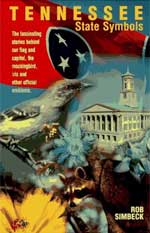
By Rob Simbeck
2002 paperback University of Tennessee Press
Tennesseans may be stirred by the sight of their state flag or the strains of “The Tennessee Waltz,” but there are many other symbols associated with the Volunteer State: animals, plants, and even rocks. This new edition of Rob Simbeck’s popular book describes thirty-one emblems of Tennessee’s heritage and explains how they came to be recognized as official state symbols.
Simbeck has compiled a treasury of facts and anecdotes about Tennessee’s symbols that will surprise even those who have lived their entire lives in the state. Here is the story behind the construction of the state capitol; an account of the “war of the iris and passionflower” as they vied for official recognition; and a fascinating look at the most fragile state symbol, the freshwater pearl, the product of the state’s mussels, many of which are endangered. Also included are the lyrics to Tennessee’s seven state songs, from “Rocky Top” to “Pride of Tennessee.”
New entries in this edition include the state reptile (eastern box turtle), state amphibian
(Tennessee cave salamander), and the state tartan, which celebrates the Scottish origins of Tennessee’s early settlers—plus the state’s official festival, the Sithville Fiddlers’ Jamboree and Crafts Festival.
From the mockingbird to the zebra swallowtail butterfly, these symbols are a celebration of what it means to be a Tennessean. Simbeck’s stories will delight readers of all ages and give them a new appreciation for their state’s rich heritage.
The Author: Rob Simbeck is a writer whose works have appeared in publications from the Old Farmer’s Almanac to Rolling Stone. He is the author of Daughter of the Air: The Life or Cornelia Fort and 50 Seasons: A History of the Nashville Symphony and a contributor to the Tennessee Encyclopedia of History and Culture.
“Being a native Tennessean and proud of it, I thought I already knew everything about my home state. Rob Simbeck, however, has come along to enlighten and educate me even further. After reading Tennessee State Symbols, I feel I’m qualified to receive my diploma as an official Tennessean.”
–Charlie Chase
“Great reference; great entertainment. Should be on every coffee table in Tennessee. This book speaks volumes about who we are.”
–Tom T. Hall

A History of the Nashville Symphony
By Rob Simbeck
1996 Thomas Nelson
as ghostwriter

By Cal Turner, Jr.
2018 Hardcover Center Street Publishing
“This classic story told through the eyes of my friend Cal Jr. is instructive in almost every area of life. I simply could not put it down. Must-read!”.
– Dave Ramsey, bestselling author and nationally syndicated radio show host.
The first-person account of the family that changed the American retail landscape.
Longtime Dollar General CEO Cal Turner, Jr. shares his extraordinary life as heir to the company founded by his father, Cal Turner, Sr., and his grandfather, a dirt farmer turned Depression-era entrepreneur. Cal’s narrative is at its heart a father-son story, from his childhood in Scottsville, Kentucky, where business and family were one, to the triumph of reaching the Fortune 300–at the cost of risking that very father/son relationship. Cal shares how the small-town values with which he was raised helped him guide Dollar General from family enterprise to national powerhouse.
Chronicling three generations of a successful family with very different leadership styles, Cal Jr. shares a wealth of wisdom from a lifetime on the entrepreneurial front lines. He shows how his grandfather turned a third-grade education into an asset for success. He reveals how his driven father hatched the game-changing dollar price point strategy and why it worked. And he explains how he found his own leadership style when he took his place at the helm–values-based, people-oriented, and pragmatic. Cal’s story provides a riveting look at the family love and drama behind Dollar General’s spectacular rise, pays homage to the working-class people whose no-frills needs helped determine its rock-bottom prices, and shares the life and lessons of one of America’s most compelling business leaders.
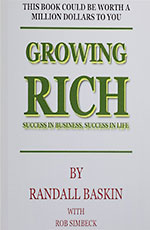
Success in Business, Success in Life
By Randall Baskin
2012 Autumn Crest Publishing

By Eddie & Tamara George
2012 Abingdon Press
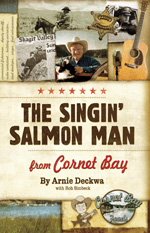
From Cornet Bay
By Arnie Deckwa
2011 Cornet Bay Publishing

Leadership Lessons from an Improbable Pastor and a Reluctant CEO
By J. Howard Olds & Cal Turner Jr.
2008 Abingdon Press

By Bishop Joseph Walker
2015 W Publishing Group
as editor

by Adam Hamilton
2012 Abingdon Press
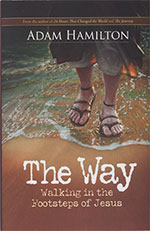
by Adam Hamilton
2012 Abingdon Press

Finding Peace Through Letting Go
by Adam Hamilton
2012 Abingdon Press

Walking the Road to Bethlehem
by Adam Hamilton
2011 Abingdon Press
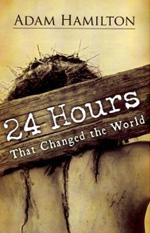
by Adam Hamilton
2009 Abingdon Press

What Other Christians Believe and Why
by Adam Hamilton
2007 Abingdon Press
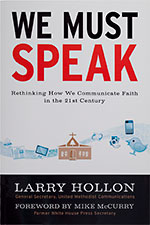
by Larry Hollon
2012 United Methodist Communications
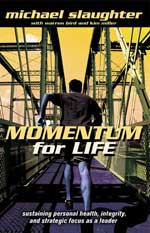
by Michael Slaughter
2007 Abingdon Press
as contributor

ed. Marty Becker et al
2010 Health Communications Inc.

editor-in-chief Carroll Van West
1998 The Tennessee Historical Society

edited by Jacob Neusner
2002 Global Publications

Bob Briner
2002 Broadman & Holman
